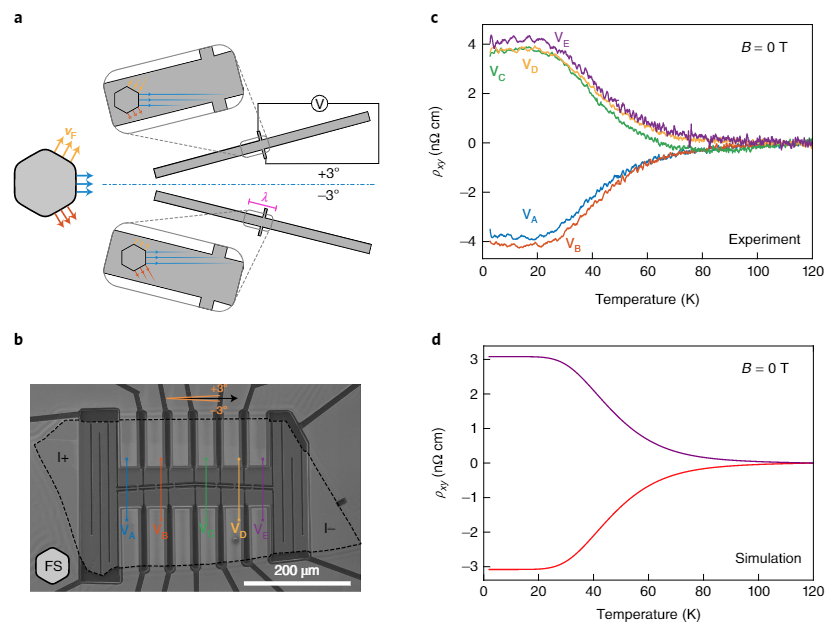
Directional ballistic transport in the two-dimensional metal PdCoO2
ResearchScience
In an idealized infinite crystal, the material properties are constrained by the symmetries of the unit cell. The point-group symmetry is broken by the sample shape of any finite crystal, but this is commonly unobservable in macroscopic metals. To sense the shape-induced symmetry lowering in such metals, long-lived bulk states originating from an anisotropic Fermi surface are needed. Here we show how a strongly facetted Fermi surface and the long quasiparticle mean free path present in microstructures of PdCoO2 yield an in-plane resistivity anisotropy that is forbidden by symmetry on an infinite hexagonal lattice. We fabricate bar-shaped transport devices narrower than the mean free path from single crystals using focused ion beam milling, such that the ballistic charge carriers at low temperatures frequently collide with both of the side walls that define the channel. Two symmetry-forbidden transport signatures appear: the in-plane resistivity anisotropy exceeds a factor of 2, and a transverse voltage appears in zero magnetic field. Using ballistic Monte Carlo simulations and a numerical solution of the Boltzmann equation, we identify the orientation of the narrow channel as the source of symmetry breaking.
Full text
View at publisher
QMAT Publications
Nature Physics (2022)
9 May 2022
DOI: 10.1038/s41567-022-01570-7